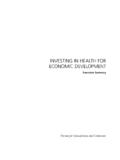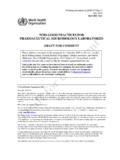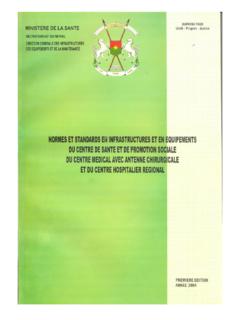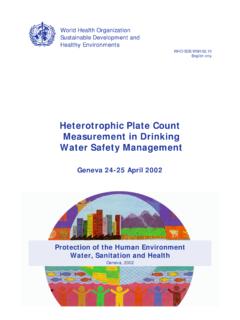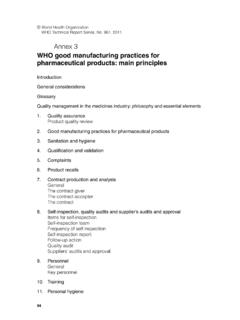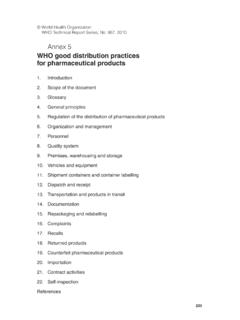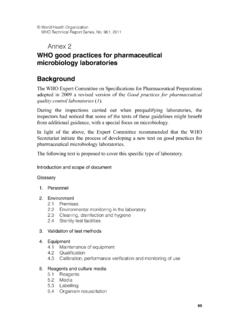Transcription of PROMOTING WOMEN S EMPOWERMENT FOR BETTER …
1 Acknowledgements: The development of these briefs was coordinated by the Partnership for Maternal, Newborn & Child Health with support from Oxford Policy Management and with input from: East African Community Open Health Initiative, GSM Alliance, ADA Foundation, Results for Development, Save the Children, UNICEF, and WHO. Partners in Population and Development (PPD) An Inter-Governmental Organization for PROMOTING South-South Cooperation Strategy Brief for the Inter Ministerial Conference on South-South Cooperation in Post ICDP and MDGs", Beijing, China 22-23 October, 2013 WOMEN S EMPOWERMENT AND GENDER EQUALITY PROMOTING WOMEN S EMPOWERMENT FOR BETTER HEALTH OUTCOMES FOR WOMEN AND CHILDREN Introduction he fundamental right to the highest attainable standard of health, including physical, mental and social well-being has been recognized in many global, regional and national declarations and charters. There is now substantial evidence that healthy populations are a foundation for sustainable social, economic and environmental development and for peace and security, and vice versa.
2 However, despite many advances over the previous decades, large numbers of disadvantaged people still suffer ill health, with thousands dying every day from preventable causes. WOMEN and children from underserved communities bear a particularly high burden of preventable disease and death. Post 2015 discussions have noted that improvements in population health will require multisectoral investment in the social, environmental and economic determinants that have slowed progress towards the health MDGs. The Partners in Population and Development meeting on South-South Cooperation in the Post ICPD and MDGs aims to identify opportunities to strengthen south-south collaboration towards achieving the MDGs and in the Post 2015 era. This strategy brief focuses on 'how to' strengthen cross-sectoral approaches between health and its social, economic and environmental determinants. It is part of a series of strategy briefs which can be accessed at T UN Photo/WFP/Phil Behan PROMOTING WOMEN S EMPOWERMENT FOR BETTER HEALTH OUTCOMES FOR WOMEN AND CHILDREN 2 WOMEN s EMPOWERMENT and Gender Equality WOMEN s EMPOWERMENT and equality is a fundamental human right and critical to achieve development objectives, including health.
3 WOMEN s increased political participation, control of resources including land, access to employment and education are crucial for PROMOTING sustainable development. There are numerous pathways by which greater gender equality can lead to improvements in health and quality of life for WOMEN and their family members. WOMEN with greater agency are more likely to have fewer children, more likely to access health services and have control over health resources, and less likely to suffer domestic violence. Their children are more likely to survive, receive BETTER childcare at home and receive health care when they need it. At the same time, improved health outcomes for WOMEN can help to strengthen their own agency and EMPOWERMENT . Healthy WOMEN are more able to actively participate in society and markets and take collective action to advance their own interests. They are likely to have greater bargaining power and control over resources within the household.
4 Therefore collaborative action between gender and health can help maximize the impact of gender policies on health and vice versa. Cross-sectoral Challenges Despite the recognized benefits for health and development outcomes, mainstreaming strategies for WOMEN s EMPOWERMENT into sectoral initiatives has proved to be challenging without sustained high level political engagement. The technical expertise required to realise such benefits, including the expertise to understand the complex process of gender reform, measure progress through gender-specific performance indicators, garner the support of key stakeholders, and challenge deeply-entrenched gender norms and power structures throughout society is often lacking. Where the expertise exists, it is frequently situated in gender-specific departments, and there is limited incentive for policymakers and programme managers from other sectors and departments to interact or engage with it.
5 Practical Strategies Despite these challenges, there are examples of practical strategies which have capitalised on the synergies between WOMEN s EMPOWERMENT and WOMEN and children s health outcomes. 1: UNDERSTAND THE POLITICAL CONTEXT FOR GENDER REFORM Gender progressive policy-making and the process of gender reform requires policymakers across sectors to be informed of the relevant stakeholder relationships and the formal and informal institutions that can influence gender equality and strengthen the links between gender and health. Institutional and stakeholder analyses can help to identify entry points and priorities for reform, understand opposition to reform, and inform coalitions for change and strategies to engage critics. An institutional analysis focuses on formal and informal institutions, including the legislative framework for gender equality ( property rights, labour market regulations or family law), customary traditions, and the societal and cultural norms that determine gender roles and create incentives for stakeholder behaviour.
6 A stakeholder analysis provides policymakers with information on which actors are likely to support or oppose policy change and implementation and identify champions who can facilitate high-level commitment to gender equality. This process must be underpinned by and supported by an in-depth analysis of the socioeconomic context and the specific differences in needs, opportunities and constraints faced by WOMEN and girls including age, marital status, ethnicity, geography, education, economic status and religion. A solid evidence base is imperative for informing policymakers across sectors of the key gaps, challenges and opportunities for gender mainstreaming in the design of policies and initiatives. CASE STUDY: ECONOMIC AND SOCIAL EMPOWERMENT THROUGH EMPLOYMENT OPPORTUNITIES FOR WOMEN IN HEALTHCARE AND SUPPORTING FREE MOVEMENT IN PAKISTAN The Pakistan Lady Health Workers programme (LHWP) is a major public sector initiative to provide reproductive healthcare to WOMEN in Pakistan.
7 It employs almost 100,000 WOMEN as community health workers who address WOMEN s reproductive healthcare needs by providing information, basic services and access to further care. The programme has had substantial positive impacts on family planning, antenatal care, neo-natal check-ups and immunisation rates in the communities it serves. It has also had significant effects on the lives of the health workers. They receive training, are knowledgeable and gain respect, earn an income, and have become more visible and mobile within their communities. An evaluation has shown that the WOMEN are more empowered: they have greater say in intra-household decision-making, including family planning and health-seeking behaviour. One driver of success is that the initiative builds on existing processes of socio-economic change in Pakistan, including rapid urbanization, and increasing acceptance of female education. Moreover, the government has clearly promoted it as a government job, and has given it considerable media coverage, giving the WOMEN needed credibility in their communities.
8 The new status of these WOMEN and their authority in their communities has no doubt contributed to the programme s ability to improve WOMEN s and children s health outcomes. PROMOTING WOMEN S EMPOWERMENT FOR BETTER HEALTH OUTCOMES FOR WOMEN AND CHILDREN 3 2: GARNER BROAD BASED SUPPORT Gender sensitive reforms within and across sectors are most likely to succeed when support is broad-based and/or high level. Engagement with civil society, the private sector and other stakeholders is imperative. WOMEN s organisations have historically played a critical role in PROMOTING changes in society, attitudes and policy, in particular regarding labour legislation and family law. For example, the Self Employed WOMEN s Association in India has advocated and created initiatives for female workers to obtain BETTER work, income, food and social security. Men also play a significant role in support of WOMEN s EMPOWERMENT in their roles as partners, fathers, political or traditional leaders and in business.
9 While the evidence suggests that both men and WOMEN need to be engaged in changing gender roles and norms, public policies still rarely reflect on the role of men in changing gender norms, and a limited number of small-scale initiatives exist. The Rwanda Men s Resource Centre engages men and boys in PROMOTING positive masculinities, healthy families and combating gender-based violence by organising training, undertaking research and national advocacy. The Rwandan government has also, through high level commitment by the head of state, been able to increase WOMEN s representation in parliament and the public sector. In Malawi the 50/50 campaign, driven by the Malawi Electoral Commission, aims to increase female representation in political offices through policies, such as the reduction of fees for WOMEN running for office. 3: CREATE FORMAL AGREEMENTS, CODES AND LAWS TO CHANGE NORMS THAT VIOLATE WOMEN S RIGHTS Government action can lead to transformative reforms across different sectors through policy interventions related to improving WOMEN s economic opportunities ( parental leave, child care), closing gaps in access to assets ( land and ownership rights, inheritance laws), or reducing differences between men s and WOMEN s voice within society ( quotas for political representation) or the household ( family law governing marriage and divorce, freedom of movement or property rights).
10 In some countries these reforms may require the reconciliation of multiple legal systems including customary and religious law. For instance in Tanzania the current land legislation, which was enacted in 1999 after an extensive process of consultation and debate, includes provisions specifically aimed at strengthening the land rights of WOMEN , while recognising customary law and existing rights. This progressive law was in part made possible by the participation of Tanzania s strong civil society in the debates preceding the legislation. Civil society has also used litigation as a strategy to strengthen WOMEN s land rights. 4: IMPLEMENT AND ENFORCE POLICY REFORM The implementation of policy reform in any sector is complicated, especially when policies run counter to conservative gender norms. This is especially true when the status quo is perceived to be challenged and the constituencies who benefit are poor and politically marginalised WOMEN .
